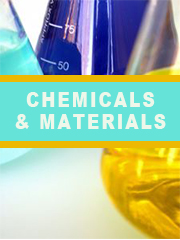Report overview
Bromine (Br2) is a reddish brown liquid that gives off dark red, highly corrosive fumes having a sharp, penetrating odor. It is indispensable raw material for inorganic pharmaceuticals, photosensitive materials, dyes and medicine. It is also the base ingredient used in the manufacturing of hydrobromic acid (HBr) which is further utilized as a raw material for organic intermediates and medicines including lithium bromide and terephthalic acid. It is obtained from seawater, natural brines, or as the by -product brines of potash recovery.
This report aims to provide a comprehensive presentation of the global market for Bromine, with both quantitative and qualitative analysis, to help readers develop business/growth strategies, assess the market competitive situation, analyze their position in the current marketplace, and make informed business decisions regarding Bromine. This report contains market size and forecasts of Bromine in global, including the following market information:
Global Bromine Market Revenue, 2018-2023, 2024-2029, ($ millions)
Global Bromine Market Sales, 2018-2023, 2024-2029, (Kiloton)
Global top five Bromine companies in 2022 (%)
The global Bromine market was valued at US$ 2028.8 million in 2022 and is projected to reach US$ 2522.1 million by 2029, at a CAGR of 3.2% during the forecast period. The influence of COVID-19 and the Russia-Ukraine War were considered while estimating market sizes.
Global Bromine key players include ICL, Albemarle, Lanxess (Chemtura Corporation), etc. Global top three manufacturers hold a share over 60%.
Middle East is the largest market, with a share about 50%, followed by China, and North America, both have a share over 35 percent.
In terms of product, Dead Sea Brine is the largest segment, with a share over 50%. And in terms of application, the largest application is Flame Retardants, followed by Chemical Intermediate, etc.
We surveyed the Bromine manufacturers, suppliers, distributors and industry experts on this industry, involving the sales, revenue, demand, price change, product type, recent development and plan, industry trends, drivers, challenges, obstacles, and potential risks.
Total Market by Segment:
Global Bromine Market, by Type, 2018-2023, 2024-2029 ($ Millions) & (Kiloton)
Global Bromine Market Segment Percentages, by Type, 2022 (%)
Dead Sea Brine
Brine Wells
Others
Global Bromine Market, by Application, 2018-2023, 2024-2029 ($ Millions) & (Kiloton)
Global Bromine Market Segment Percentages, by Application, 2022 (%)
Flame Retardants
Biocides
Drilling Fluids
Chemical Intermediate
Water Treatment
Others
Global Bromine Market, By Region and Country, 2018-2023, 2024-2029 ($ Millions) & (Kiloton)
Global Bromine Market Segment Percentages, By Region and Country, 2022 (%)
North America
US
Canada
Mexico
Europe
Germany
France
U.K.
Italy
Russia
Nordic Countries
Benelux
Rest of Europe
Asia
China
Japan
South Korea
Southeast Asia
India
Rest of Asia
South America
Brazil
Argentina
Rest of South America
Middle East & Africa
Turkey
Israel
Saudi Arabia
UAE
Rest of Middle East & Africa
Competitor Analysis
The report also provides analysis of leading market participants including:
Key companies Bromine revenues in global market, 2018-2023 (Estimated), ($ millions)
Key companies Bromine revenues share in global market, 2022 (%)
Key companies Bromine sales in global market, 2018-2023 (Estimated), (Kiloton)
Key companies Bromine sales share in global market, 2022 (%)
Further, the report presents profiles of competitors in the market, key players include:
ICL
Albemarle
Lanxess
Jordan Bromine Company (JBC)
Tosoh
Solaris Chemtech (SCIL)
Perekop Bromine
Yuyuan Group
Haiwang Chemical
Dadi Salt Chemical Group
Chengyuan Salt Chemical
Lubei Chemical
Runke Chemical
Outline of Major Chapters:
Chapter 1: Introduces the definition of Bromine, market overview.
Chapter 2: Global Bromine market size in revenue and volume.
Chapter 3: Detailed analysis of Bromine manufacturers competitive landscape, price, sales and revenue market share, latest development plan, merger, and acquisition information, etc.
Chapter 4: Provides the analysis of various market segments by type, covering the market size and development potential of each market segment, to help readers find the blue ocean market in different market segments.
Chapter 5: Provides the analysis of various market segments by application, covering the market size and development potential of each market segment, to help readers find the blue ocean market in different downstream markets.
Chapter 6: Sales of Bromine in regional level and country level. It provides a quantitative analysis of the market size and development potential of each region and its main countries and introduces the market development, future development prospects, market space of each country in the world.
Chapter 7: Provides profiles of key players, introducing the basic situation of the main companies in the market in detail, including product sales, revenue, price, gross margin, product introduction, recent development, etc.
Chapter 8: Global Bromine capacity by region & country.
Chapter 9: Introduces the market dynamics, latest developments of the market, the driving factors and restrictive factors of the market, the challenges and risks faced by manufacturers in the industry, and the analysis of relevant policies in the industry.
Chapter 10: Analysis of industrial chain, including the upstream and downstream of the industry.
Chapter 11: The main points and conclusions of the report.
